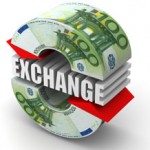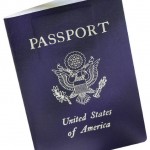 While English is spoken in a great many countries around the world, unfortunately (or fortunately – depending on your viewpoint) the US Dollar is not accepted beyond US territories. Although the world ‘trades’ in dollars, the physical currency itself isn’t widely accepted beyond US borders. That being the case, in order to buy things in other countries without using a credit or debit card – you’ll need to convert your US dollars into the currency of the country you are traveling. Even if you do use a debit/credit card – you’ll still need to understand what you will be charged in US dollars when your statement arrives.
While English is spoken in a great many countries around the world, unfortunately (or fortunately – depending on your viewpoint) the US Dollar is not accepted beyond US territories. Although the world ‘trades’ in dollars, the physical currency itself isn’t widely accepted beyond US borders. That being the case, in order to buy things in other countries without using a credit or debit card – you’ll need to convert your US dollars into the currency of the country you are traveling. Even if you do use a debit/credit card – you’ll still need to understand what you will be charged in US dollars when your statement arrives.
This is where foreign exchange rates (or currency conversion) come into play. From Wikipedia – “The Exchange Rates between two currencies specifies how much one currency is worth in terms of the other. It is the value of a foreign nation’s currency in terms of the home nation’s currency. For example an exchange rate of 91 Japanese yen (JPY, ¥) to the United States dollar (USD, $) means that JPY 91 is worth the same as USD 1.”
Online Currency Converters
These tools allow you to quickly convert any amount of one currency into another, e.g., 100 US Dollars equal 73 Euros, or 7,500 South African Rand equals $120 US Dollars. What’s important to note here is that these are wholesale rates. Wholesale rates are the rates large banks and countries trade currencies on the open market. These rates fluctuate daily and are rarely offered to consumers. The rate consumers actually pay is a little higher – to account for the cost of the transaction and the institution’s profit margin. What the wholesale exchange rate can tell you is a ballpark figure or a starting point of what the final exchange rate will be.
As long as you understand the limitations of these tools, there are a few currency exchange sites on the web that make the process much easier than looking in the newspaper.
- Online Currency Converter (most popular) – http://www.xe.com
- Yahoo Finance Currency Converter – http://finance.yahoo.com/currency-converter/
- Oanda Currency Site – http://www.oanda.com/convert/classic
Tip for Getting Close to Wholesale Rates
Once you have a ballpark idea of what the conversion rate will be for your transactions, your goal should now be to get as close to the wholesale rate as possible. Below are a few options to reaching this goal:
- Order Before Leaving – BankofAmerica will deliver most all major currencies to your doorstep – and you don’t even have to be a customer. They will offer a conversion rate that’s pretty close to the wholesale exchange rate. If you order more than $1,000 US worth of cash, the service is free (BOA will mail to your house or send it to your nearest BOA branch – your choice). If you are not ordering more than $1,000 – they will charge you about $7.50 for the entire transaction (the fee is the same whether mailed to you or branch). The good news is you don’t have to order a $1,000 in a single currency to avoid the transaction fee. For example, you can order $500 worth of Euros, $300 worth of British Pounds, and $200 worth of Mexican Pesos and not be charged the $7.50 fee. To get started, go to http://www.bankofamerica.com/foreigncurrency/ to indicate how much money and which currency you’ll need. BOA will tell you the conversion rate, you determine how you want to pay (BOA account or outside Credit Card) and the money arrives in 1-3 business days.
- Use Credit Card – If carrying around a large wad of cash isn’t your cup of tea (and it shouldn’t be), you can use your credit card to get a better exchange rate. Aside from all of the other reasons to use your credit card to make purchases; your bank is fronting the money for the transaction and has a better negotiating position and therefore commands a better exchange rate. The downside of using your credit card is interest may accrue on the transaction (if you don’t pay your balances every month) and some issuers charge a foreign transaction fee for using your card outside of the country – anywhere from 1-3 percent of the total transaction.
- Cash from ATM – Perhaps the best of both worlds – use your ATM card to get money after you arrive in your destination. The goal here is to pull as much cash as you will need for the trip all at one time. The ATM owner and your Bank my charge you an ATM fee – but it will be less than what you would have been charged if you had used your credit card for multiple transactions. Again, because the bank is effectively issuing local currency on your behalf – you are getting the same exchange rate as if you have used your credit card. Most all airports have ATMs and most US based credit cards will work in these machines (with the unfortunate exception of Cuba).
What Not to Do
- Never Use Airport Currency Exchange – This could possibly be the worst way to exchange money – only slightly less awful than getting counterfeit bills. These outfits not only give you an awful exchange rate (usually 5-10% worse than the wholesale rate) but they also charge a ‘fee’ for the transaction – either a flat amount or a percentage of the transaction. One place even tried to charge me $10 for getting ‘change’ in the same currency!!! Ridiculous.
- Street Vendors – Someone offers you a lower exchange rate if you ‘follow them’. There’s a high probability that at best – you get a an incorrect dollar amount (like a 50 cent coin instead of the 5 dollar coin you were supposed to get) or at worst – you’ll get outright counterfeit bills at the end of this transaction. Do yourself a favor and use an ATM in the airport or bank location.
- Cash Advances from Credit Card – Unless you are stranded in a desert without cash, lost your ATM card and the tow truck guy refuses to take your credit card – I can’t see any good reason to get a cash advance. Your credit card company usually doles out cash advances at around 23% interest – beware.
A few more tips
- Try to do conversion on the fly. Say you are in Mexico and the exchange rate is $1 dollar = 7 pesos and the steak dinner you’ve been eying costs 150 pesos. Simply divide 150 by 7 to know the US equivalent is $21.42. For me, it’s easier just to divide the first number when doing this on the fly – so 15 divided by 7 equals 2 – so I immediately know it’s somewhere in the range of $20-$29 dollars.
- If you have an iPhone, Android or Windows Mobile Phone, download a conversion app (or just use the calculator) to perform the exact calculation.
- Round Down – if conversion rate is 7.7, round down to 7. This way, it’s easier to perform real-time math and ensures you don’t blow your budget due to bad math.
Hopefully this article will take some of the mystery out of this process and make it easier to manage your hard earned money when traveling abroad.
Happy Travels














